Single cell transcriptome profiling reveals cutaneous immune microenvironment remodeling by photodynamic therapy in photoaged skin
- PMID: 37404811
- PMCID: PMC10315469
- DOI: 10.3389/fimmu.2023.1183709
Single cell transcriptome profiling reveals cutaneous immune microenvironment remodeling by photodynamic therapy in photoaged skin
Abstract
Background: The immune microenvironment plays a critical role in maintaining skin homeostasis, which is closely related to the dysfunction in photoaged skin such as autoimmunity and tumorigenesis. Several recent studies have demonstrated the efficacy of 5-aminolevulinic acid photodynamic therapy (ALA-PDT) in alleviating photoaging and skin cancer. However, the underlying immune mechanisms and the immune microenvironment change by ALA-PDT remain largely unknown.
Methods: To illustrate the effects of ALA-PDT on immune microenvironment in photoaged skin, single cell RNA sequencing (scRNA-seq) analysis of photoaged skin on the extensor side of the human forearm before and after ALA-PDT was performed. R-packages of Seurat, clusterProfiler, Monocle, CellChat were used for cell clustering, differentially expressed genes analysis, functional annotation, pseudotime analysis and cell-cell communication analysis. The gene sets related to specific functions were extracted from the MSigDB database, which were used to score the functions of immune cells in different states. We also compared our result with published scRNA-seq data of photoaged skin of the eyelids.
Results: The increase score of cellular senescence, hypoxia and reactive oxygen species pathway in immune cells and the decrease of immune receptor activity function and proportion of naive T cells were found in skin photoaging. Moreover, the function of T cell ribosomal synthesis was also impaired or down regulated and function of G2M checkpoint was up regulated. However, ALA-PDT showed promising results in reversing these effects, as it improved the above functions of T cells. The ratio of M1/M2 and percentage of Langerhans cells also decreased with photoaging and increased after ALA-PDT. Additionally, ALA-PDT restored the antigen presentation and migration function of dendritic cells and enhanced cell-cell communication among immune cells. These effects were observed to last for 6 months.
Conclusion: ALA-PDT has potential to rejuvenate immune cells, partially reversed immunosenescence and improved the immunosuppressive state, ultimately remodelling the immune microenvironment in photoaged skin. These results provide an important immunological basis for further exploring strategies to reverse skin photoaging, chronological aging and potentially systemic aging.
Keywords: ALA-PDT; immune microenvironment; immunosenescence; photoaging; single cell RNA sequencing (scRNA-seq).
Copyright © 2023 Yan, Yan, Cao, Wang, Zeng, Shi, Chang, Chen, Zhang, Liao, Jin, Sun, Zhang, Wang and Wang.
Conflict of interest statement
The authors declare that the research was conducted in the absence of any commercial or financial relationships that could be construed as a potential conflict of interest. The handling editor YL declared a shared affiliation with the author LS at the time of the review.
Figures
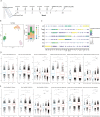
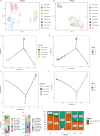
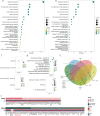
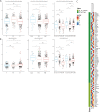
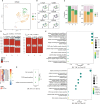

Similar articles
-
5-aminolevulinic acid photodynamic therapy protects against UVB-induced skin photoaging: A DNA-repairing mechanism involving the BER signalling pathway.J Cell Mol Med. 2024 Jul;28(14):e18536. doi: 10.1111/jcmm.18536. J Cell Mol Med. 2024. PMID: 39044341 Free PMC article.
-
ALA-PDT elicits oxidative damage and apoptosis in UVB-induced premature senescence of human skin fibroblasts.Photodiagnosis Photodyn Ther. 2016 Jun;14:47-56. doi: 10.1016/j.pdpdt.2016.02.005. Epub 2016 Feb 10. Photodiagnosis Photodyn Ther. 2016. PMID: 26876682
-
Ultrastructural changes in photorejuvenation induced by photodynamic therapy in a photoaged mouse model.Eur J Dermatol. 2013 Jul-Aug;23(4):471-7. doi: 10.1684/ejd.2013.2050. Eur J Dermatol. 2013. PMID: 23797711
-
Aminolevulinic acid: pharmacological profile and clinical indication.Expert Opin Investig Drugs. 2001 Jun;10(6):1139-56. doi: 10.1517/13543784.10.6.1139. Expert Opin Investig Drugs. 2001. PMID: 11772241 Review.
-
The use of photodynamic therapy in dermatology: results of a consensus conference.J Drugs Dermatol. 2006 Feb;5(2):140-54. J Drugs Dermatol. 2006. PMID: 16485882
Cited by
-
Exploring Anti-Aging Effects of Topical Treatments for Actinic Keratosis.Medicina (Kaunas). 2025 Jan 24;61(2):207. doi: 10.3390/medicina61020207. Medicina (Kaunas). 2025. PMID: 40005324 Free PMC article. Review.
-
Single-Cell Sequencing Combined with Transcriptome Sequencing to Explore the Molecular Mechanisms Related to Skin Photoaging.J Inflamm Res. 2024 Dec 17;17:11137-11160. doi: 10.2147/JIR.S496328. eCollection 2024. J Inflamm Res. 2024. PMID: 39713718 Free PMC article.
-
Cellular senescence in cancer: from mechanism paradoxes to precision therapeutics.Mol Cancer. 2025 Aug 8;24(1):213. doi: 10.1186/s12943-025-02419-2. Mol Cancer. 2025. PMID: 40781676 Free PMC article. Review.
-
Molecular Biomarkers in Cutaneous Photodynamic Therapy: A Comprehensive Review.Diagnostics (Basel). 2024 Dec 3;14(23):2724. doi: 10.3390/diagnostics14232724. Diagnostics (Basel). 2024. PMID: 39682631 Free PMC article. Review.
-
Advances in the application of multi-omics analysis in skin aging.Front Aging. 2025 Jul 31;6:1596050. doi: 10.3389/fragi.2025.1596050. eCollection 2025. Front Aging. 2025. PMID: 40822678 Free PMC article. Review.
References
Publication types
MeSH terms
Substances
LinkOut - more resources
Full Text Sources
Medical

